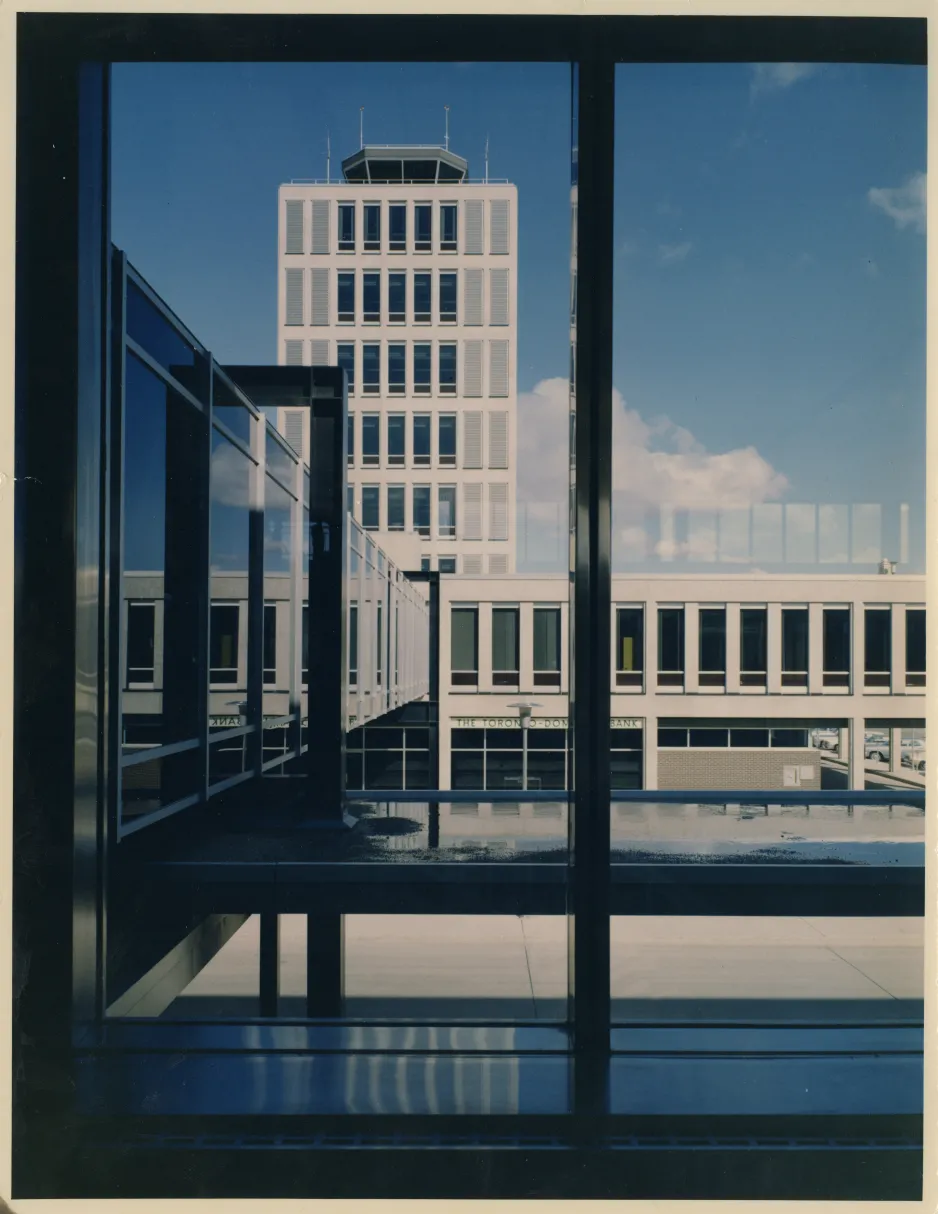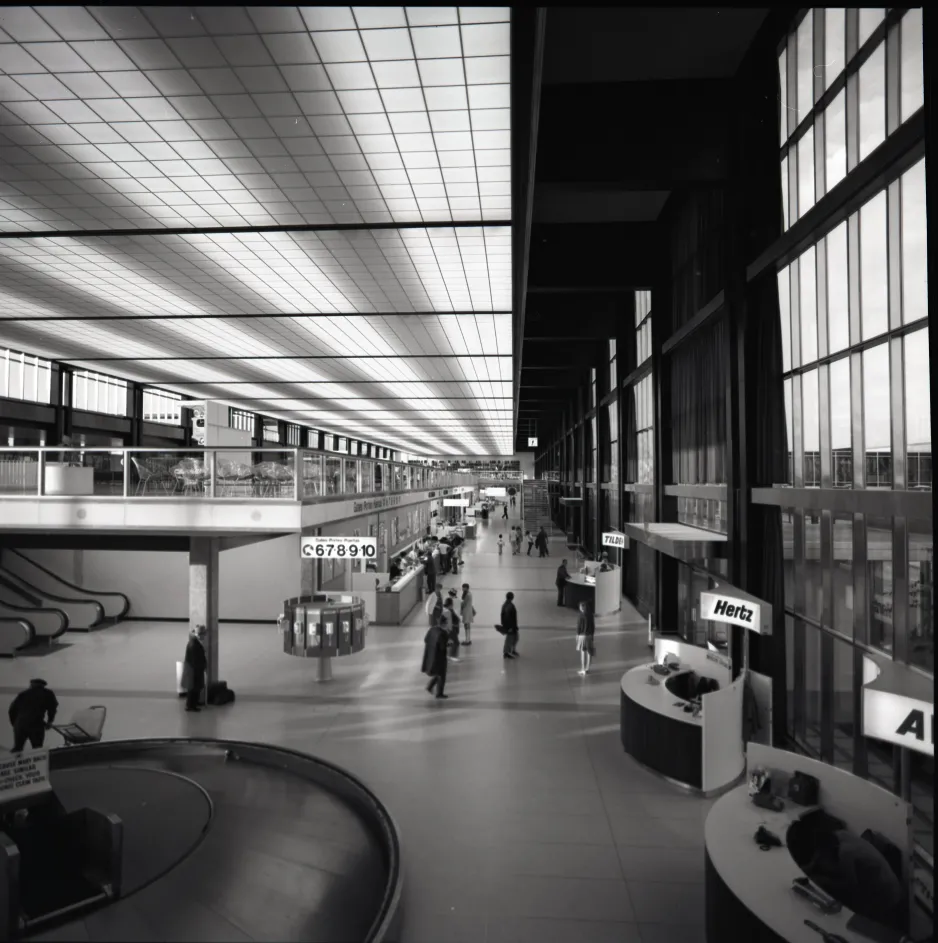"Northern Lights" 3-D Mural: A Colourful Artistic Tribute to Canada’s Jet Age Beginnings
In 1964, the Winnipeg International Airport opened as part the Department of Transport’s Air Terminal Building project begun by the Canadian government in the mid 1950s that resulted in the production of large, modern airport terminals in Gander, Halifax, Montreal, Toronto, Winnipeg, Edmonton, and Vancouver. The project was overseen by a chief architect from the Department of Transport, meaning the terminals had a cohesive modernist design, but each terminal was designed with unique features reflecting its locale, such as fashionable furniture and commissioned artworks. One such artwork at the Winnipeg International Airport was a large 3-D mural by Canadian architect and artist John Graham (1922-2007) called Northern Lights (ca. 1963) that was on display from 1964 until 2011, when the airport was demolished and Ingenium acquired the artwork.

The Winnipeg International Airport’s large windows would cast light and shadow onto the Northern Lights mural depending on the time of day.

Today, the many pieces that make up Northern Lights are neatly stacked on wooden pallets at the Ingenium Centre in Ottawa. At first glance, it is hard to imagine how these brightly-coloured, rectangular pieces of aluminum, plexiglass, and mosaic tile once made up such a large piece of public art, but even in its disassembled state, Northern Lights can teach us about the history of Canadian aviation and can offer Ingenium an opportunity to interpret airport infrastructure in new ways.

The many pieces that make up the Northern Lights mural are kept in one of the Ingenium Centre’s artifact storage rooms.
Starting in the late 1950s and early 1960s, the adoption of the jet engine allowed aircraft manufacturers to build passenger aircraft that were bigger and could travel faster than ever before. In turn, this allowed for lower operating costs for airlines and increased passenger traffic. Known as the “jet age,” this new era of aviation not only changed air travel, but permeated society in the form of a modernist, sleek, and glamorous design aesthetic reflected in everything from cars to furniture. With its sharp lines, smooth surfaces, and bright colours, Northern Lights is a product and artistic depiction of the jet age in Canada.

The sleek design of the Winnipeg International Airport reflected the stylistic changes of Canadian airports during the jet age, which began in the late 1950s.
Additionally, Northern Lights is reflective of the original Winnipeg International Airport terminal’s design. For example, the airport prioritized natural light and featured large windows along two walls of the building. This emphasis on light is echoed in Northern Lights, which catches and reflects light through the piece’s plexiglass surfaces. Furthermore, the materials used to build the airport were highlighted instead of hidden, notably demonstrated through the use of exposed steel throughout the building, which is mirrored by Northern Lights’ use of exposed aluminum. From Ingenium’s perspective, this makes Northern Lights an exciting artifact with unique interpretive potential, as this piece can represent the airport itself – something that has historically been challenging, as airport infrastructure is so large and difficult to preserve.
Hopefully, one day, John Graham’s Northern Lights will be reassembled and put on display at Ingenium’s Canada Aviation Space Museum in Ottawa for all to enjoy. Until then, however, it will continue to be safely stored at the Ingenium Centre.

Looking down the concourse of the Winnipeg International Airport, with the Northern Lights mural mounted on the North wall.
Enjoying the Ingenium Channel? Help us improve your experience with a short survey!

















